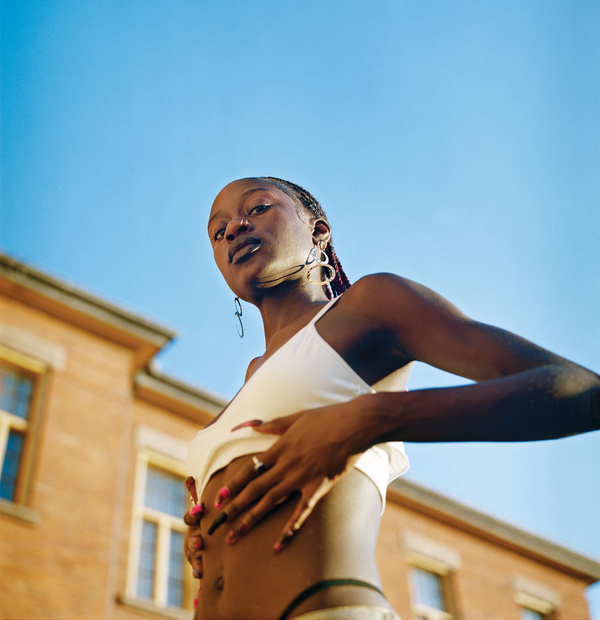
Jorian Charlton Georgia
Asserting a powerful Black presence in the city, challenging colonial histories of...
Curated exhibitions and public art presented in partnership with institutions across the GTA

Asserting a powerful Black presence in the city, challenging colonial histories of...

A new visual narrative of Muslim experience and identity in Toronto...

Using photography to navigate the experiences of a first-generation immigrant...

An exploration of “teenagehood,” when childhood collides with adulthood...

Emerging photographers probing the challenges in contemporary representations of identity, culture and...


Exploring new ways of thinking about Jamaican-Canadian culture, and reimagining the family...

Mining personal archives, institutional collections, music, and oral histories to chart and...

An incisive remediation of archival material, exploding colonial notions of Indigeneity...


A parodic and critical take on internet culture as a complex space...

Exploring physical, psychological, and cultural conceptions of time in relation to photography...

A new visual narrative of Muslim experience and identity in Toronto...

Keeping alive the polychromatic nature of Black experiences, holding the vastness of...

Restaging personal histories toward expansive new futures...

Documenting global projects that endeavour to ensure ecological and societal longevity...

A mixed-media installation evoking the spaces on either side of the camera's...

An homage to light's ephemeral apparitions...

Compelling staged scenes ignite the imagination...

Deconstructing oppressive barriers, dreaming everyday utopias into being...

Documenting an epic transcontinental journey...

Exploring the role of belief under the conditions of our age...

A poetic and luminous look at the wonder and complexity of the...


Nature's power in conflict with the menace of human desire...

A delicate balance between absence and presence evokes life's ephemeral nature...

Questioning the complex cultural and gender-related politics that underlie representation...

Embedding and activating Black diasporic narratives in the urban wilderness...

Exploring how familial exchanges produce Indigenous art histories...


Appropriating contemporary images to highlight photography's role as an instrument of protest...

A comprehensive selection of works exemplifying a unique, transcontinental, queer photographic vision...

A photographic collection offering a candid look into the hidden worlds of...

A delicate, composite seascape commemorating the countless migrants who sail in search...

Interrogating practices of photojournalism in photographs made in the USSR and Eastern...

Drawing on collections and archival materials, Bowen weaves together narrative threads...

A mixed-media installation addressing the dramatic forces of the Anthropocene and its...

Ten Canadian artists employing photographic media to engage with issues of identity...

Focusing in on stereographic representations of Western science at a time of...

An exploration of family, land, and the power of place in Mixed...

SIREN is a solo exhibition by the Toronto-based inter-disciplinary artist nichola feldman-kiss. The multi-layered...

An evocative video and installation framing borders not as lines but rather...

Engaging with a history of Black male visual representation, reflecting shifting notions...

A decolonial praxis guiding the viewer toward freedom, liberation, joy, and celebration...

An immersive experience focusing on global issues of displacement, migration, and geopolitical...

Exemplifying the creativity and range of perspectives of the emerging generation of...

An examination of analogue and digital aesthetics and their relationships to time...

Exploring performances of gender, queerness, nations, environmentalism, and public protest...


Examining structures of power through splicing and remixing the iconography of global...

A group exhibition looking at memory, loss, and the aftermath of change...

Collaborative yet self-styled portraits generate new space for Black men in the...

A group exhibition contemplating the influential power of narrative ...

A third instalment charting the progression of the massive Port Lands Flood...

Investigating colonial residues left in the environment and conceiving of natural spaces...

Envisioning reparative interventions into the remaining traces of a vast colonial project...

A retrospective look at the trajectory of Thomas's powerful photographic vision...

Vivid images addressing the impact on local women and girls of living...

An installation of delicate, monumental beauty warning of things to come...

An installation bringing a photograph, a cultural tradition, and the power of...

Reflecting on the rebirth borne of crisis and its collateral effects...

Images reflecting the destructive and regenerative power of wildfires...

An intimate celebration of the interior lives of Black women...



Re-engaging the archival vestiges of cultural memory to embody their lasting traces...

Examining the construction, development, uses, and implications of the unique Leslie Street...